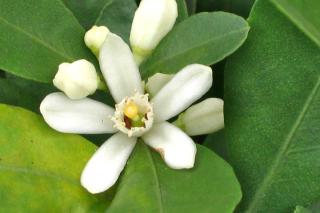

Citrus mitis is an indoor orange tree very well suited to living inside our heated homes.
Name – Citrus mitis
Family – Rutaceae (Rue family)
Height – 3 to 6 ½ feet (1 to 2 meters)
Exposure – luminous indoor
Soil – soil mix
Foliage – evergreen
Fruit formation – November to March
Caring for it is easy, and repotting, watering and pruning, are all good practices that will help you to have a good-looking orange tree.

Anticipate repotting in a pot that is slightly larger than the previous every 2 or 3 years on average.
It can only grow directly in the ground in Mediterranean-type climates or tropical climates.
If this is the case, mix soil mix into your garden soil and ensure that your soil drains well.
If it doesn’t drain well, dig a hole that is slightly deeper, and layer gravel, rocks, sand or clay pebbles along the bottom.
Pruning isn’t really needed, but, to rebalance the silhouette of your citrus mitis, prune lightly after repotting, in spring.
Adding citrus-specific fertilizer will considerably increase fruit and foliage quality.
Indoors, water regularly but not too much as soon as the soil is dry. No need to water too much, it would make your citrus mitis suffer.

Indoors, simply set your citrus mitis in a well-lit spot but avoid direct sunlight during the hottest hours.
Also avoid setting it right near a radiator.
If you can, it is good to bring your Citrus mitis outdoors after any risk of freezing has disappeared, from spring until the end of summer, either on a balcony, terrace, or garden deck.
Read also:
Adding fertilizer for citrus plants regularly will greatly increase blooming and fruit formation.